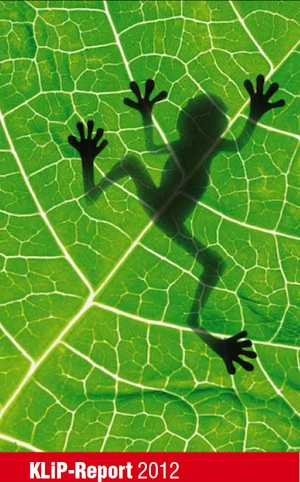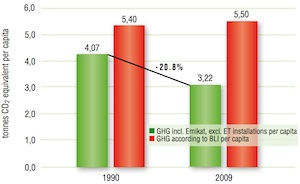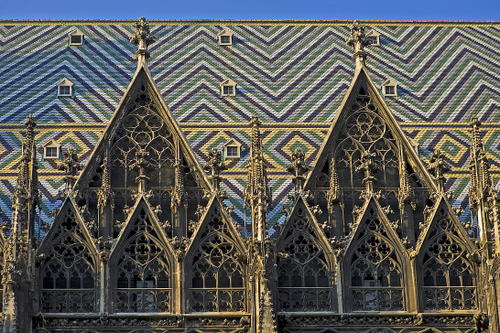Η πόλη του Προγράμματος Προστασίας του Κλίματος της Βιέννης
 Photo Gallery, the capital of the Austro-Hungarian Empire. It played an essential role as a leading European music centre, from the great age of Viennese Classicism through the early part of the 20th century. The KLIP program covers the entire city of Vienna and therefore the historic centre which was inscribed on the World Heritage List in 2001.
Photo Gallery, the capital of the Austro-Hungarian Empire. It played an essential role as a leading European music centre, from the great age of Viennese Classicism through the early part of the 20th century. The KLIP program covers the entire city of Vienna and therefore the historic centre which was inscribed on the World Heritage List in 2001.
On December 18th, 2009 το δημοτικό συμβούλιο της Βιέννης θέσπισε το επικαιροποιημένο πρόγραμμα προστασίας του κλίματος της πόλης της Βιέννης (Klip II), η οποία θα ισχύει μέχρι 2020. The objective of KliP II is to reduce greenhouse gas emissions by 1.4 million tonnes by 2020 by using a package of 385 μεμονωμένα μέτρα. Including the 3.1 million tonnes of emissions already reduced by 2008, the total reduction will amount to 4.5 million tonnes of CO2 equivalent by 2020.
KliP II measures
Αυτό το πρόγραμμα είναι η επικαιροποίηση της λεγόμενης Klip I, η οποία τέθηκε σε ισχύ 1999 and consists in a set of measures in the following large fields of action: energy supply, use of energy, Photo Gallery, and procurement, διαχείριση των αποβλήτων, γεωργίας και της δασοκομίας, τη διατήρηση της φύσης.
The KliP II measures aim to reduce per capita emissions by 21% of the 1990 level by 2020. An analysis of the development of greenhouse gas emissions per capita shows that the emissions in 2009 were already 21% below the 1990 level (KLiP I). The ambitious implementation of the planned measures of KliP II includes the following:
- increase the share of district heating to 50%
- continue the thermal renovation of buildings
- increase the share of public transport, reduce car
- traffic, and promote ecomobility by focusing on public
- μεταφορά, cycling, and pedestrian traffic
- more than double the amount of end-use energy produced from renewable energy sources from 1990
- develop an energy supply security plan.
Climate protection, renewable energies and energy saving measures
 Photo Gallery. Έργα που έχουν υλοποιηθεί μέχρι σήμερα περιλαμβάνουν υδροηλεκτρικών σταθμών, αιολικά πάρκα, ΘΗΣ, φωτοβολταϊκές εγκαταστάσεις και βιομάζας ξύλου σταθμού. As there are constraints on the installation of renewable energy plants within the city limits, Η πόλη της Βιέννης είναι όλο και περισσότερο στρέφονται σε νέα έργα στην περιοχή, τόσο εντός όσο και εκτός των συνόρων της Αυστρίας.
Photo Gallery. Έργα που έχουν υλοποιηθεί μέχρι σήμερα περιλαμβάνουν υδροηλεκτρικών σταθμών, αιολικά πάρκα, ΘΗΣ, φωτοβολταϊκές εγκαταστάσεις και βιομάζας ξύλου σταθμού. As there are constraints on the installation of renewable energy plants within the city limits, Η πόλη της Βιέννης είναι όλο και περισσότερο στρέφονται σε νέα έργα στην περιοχή, τόσο εντός όσο και εκτός των συνόρων της Αυστρίας.
A significant number of solar-thermal power installations are used in the city to supply hot water and heating, and photovoltaic plants convert sunlight into electricity. Wind and water are used as energy sources in wind power plants and a mini-hydropower station, and buildings are heated by means of geothermal energy. The final result will more than double the amount of final energy produced by renewables compared to 1990.
One of the basic problems of climate protection lies in the fact that mankind consumes more and more energy despite various positive measures (Photo Gallery). Countering this development is one of the greatest challenges of the future. Therefore the City of Vienna has given special importance to energy saving measures. This is why a “Municipal Energy Efficiency Programme (SEP)” has been worked out after 2009. Νοικοκυριά, trade, the services sector, βιομηχανία, public institutions, γεωργία, and transport were investigated with a view to the opportunities and potential for energy savings and the framework conditions and measures required for this purpose were defined.
Lessons learned and potential replicability
The climate protection programme of the City of Vienna has not only succeeded in reducing greenhouse gas emissions and improve the quality of life, but has also stimulated the economy considerably. Between 1999 και 2010, Photo Gallery 20 δισεκατομμύριο, creating an added value of approximately 18.7 δισεκατομμύριο. This secured over 58,600 jobs in 2011.
This vision is a driving force for replication of the experience from Vienna to many cities and villages included in the UNESCO sites.
















